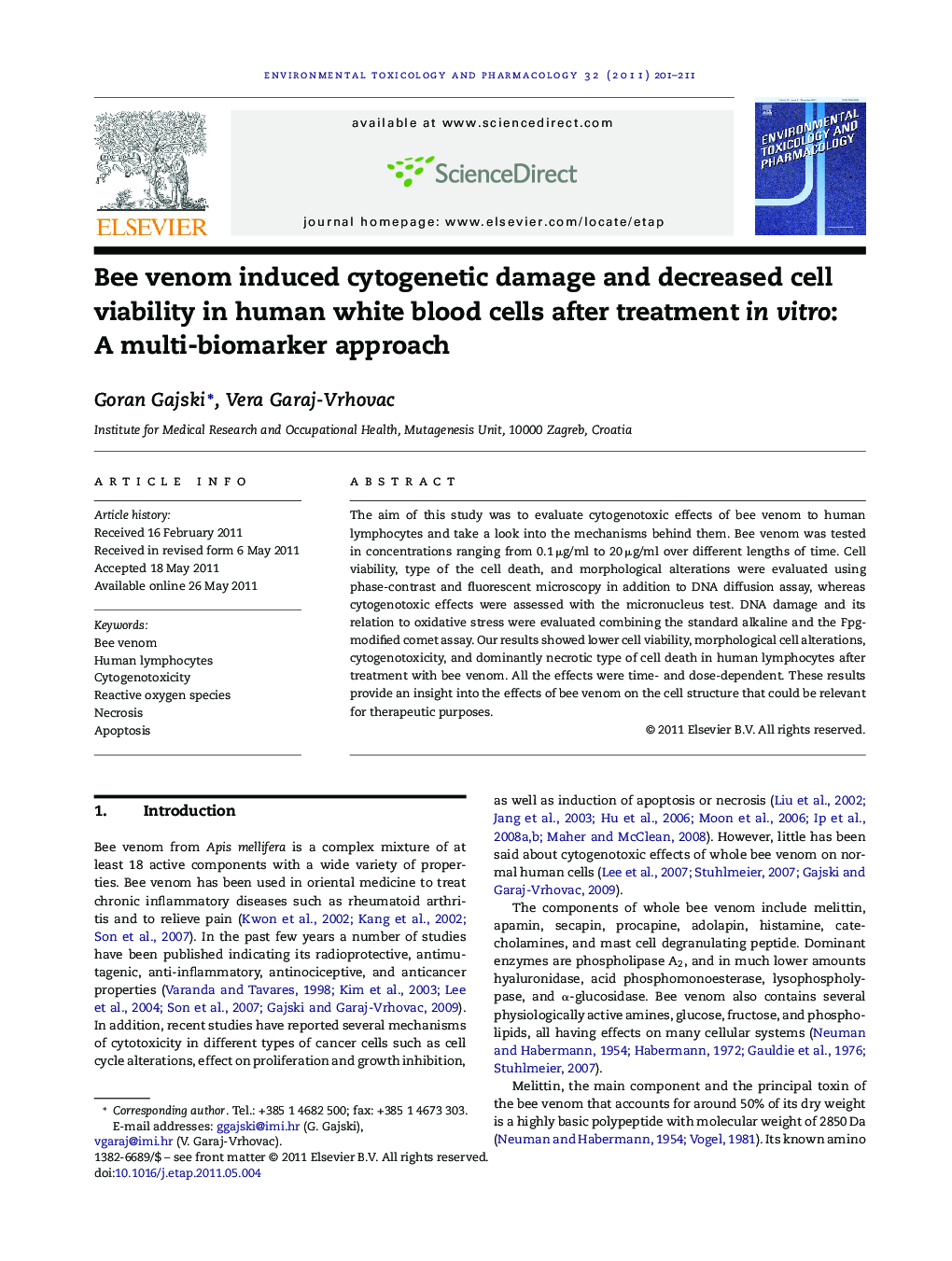| Article ID | Journal | Published Year | Pages | File Type |
|---|---|---|---|---|
| 2583794 | Environmental Toxicology and Pharmacology | 2011 | 11 Pages |
The aim of this study was to evaluate cytogenotoxic effects of bee venom to human lymphocytes and take a look into the mechanisms behind them. Bee venom was tested in concentrations ranging from 0.1 μg/ml to 20 μg/ml over different lengths of time. Cell viability, type of the cell death, and morphological alterations were evaluated using phase-contrast and fluorescent microscopy in addition to DNA diffusion assay, whereas cytogenotoxic effects were assessed with the micronucleus test. DNA damage and its relation to oxidative stress were evaluated combining the standard alkaline and the Fpg-modified comet assay. Our results showed lower cell viability, morphological cell alterations, cytogenotoxicity, and dominantly necrotic type of cell death in human lymphocytes after treatment with bee venom. All the effects were time- and dose-dependent. These results provide an insight into the effects of bee venom on the cell structure that could be relevant for therapeutic purposes.
► In this study we evaluate cytogenotoxic effects of bee venom to human lymphocytes. ► Cell viability, type of the cell death, morphological alterations were evaluated. ► Results showed lower cell viability, cytogenotoxicity, and dominantly necrosis. ► Results could be relevant for therapeutic purposes.
